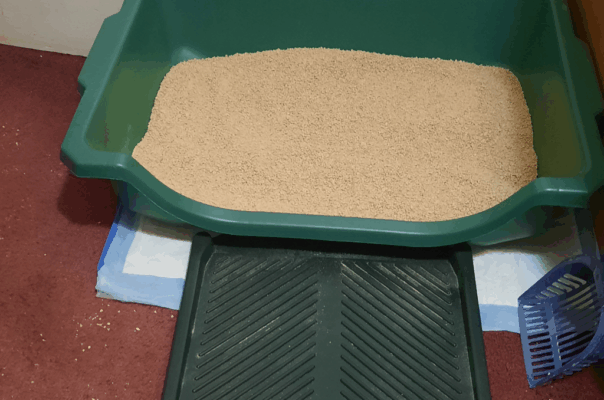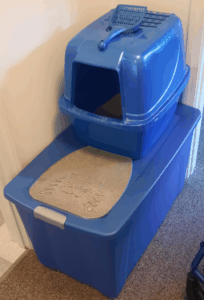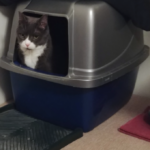 Maintaining a clean litter box is one of the most important responsibilities of cat ownership. For senior cats like Belle and Paws, who lived to the impressive ages of 20 and 21, proper litter box maintenance becomes even more crucial as mobility and health concerns emerge.
Maintaining a clean litter box is one of the most important responsibilities of cat ownership. For senior cats like Belle and Paws, who lived to the impressive ages of 20 and 21, proper litter box maintenance becomes even more crucial as mobility and health concerns emerge.
This comprehensive guide will walk you through everything from daily cleaning routines to monthly deep cleans, helping you create the most comfortable environment for your feline companions.
The Importance of a Clean Litter Box
Cats are naturally clean animals, and many will refuse to use a dirty litter box. For senior cats especially, a clean litter box is not just about comfort but also about health. Regular cleaning:
- Prevents bacterial growth that can lead to urinary tract infections
- Reduces ammonia buildup which can irritate respiratory systems
- Makes it easier to monitor your cat’s health through waste observation
- Prevents house soiling issues as cats seek cleaner alternatives
- Reduces stress for cats who are particularly sensitive to cleanliness
Daily Maintenance: The Scooping Routine
The foundation of good litter box hygiene is daily scooping. When Belle and Paws were younger, daily scooping was sufficient, but as they aged, we found that twice-daily scooping helped accommodate their increasing sensitivity.
Scooping Tips:
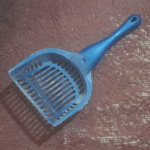 Use a dedicated scoop with slots wide enough to let clean litter fall through
Use a dedicated scoop with slots wide enough to let clean litter fall through- Remove all clumps and solid waste completely
- Check for any unusual waste characteristics that might indicate health issues
- Add a small amount of fresh litter to replace what’s been removed
- Wash your hands thoroughly after cleaning
Weekly Maintenance: The Complete Change
While daily scooping removes most waste, a complete litter change once a week ensures optimal cleanliness. This involves:
- Completely emptying the litter box
- Wiping down the interior with paper towels
- Adding fresh litter to the appropriate depth (usually 2-3 inches)
For multiple-cat households staggering the complete changes of litter throughout the week can help maintain cleanliness without overwhelming your schedule.
Monthly Deep Cleaning: Sanitizing the Box
Monthly deep cleaning is essential for eliminating bacteria and odors that daily scooping and weekly changes can’t address. This was particularly important when Belle and Paws reached their late years.
Safe Cleaning Solutions:
Dishwashing Soap Solution
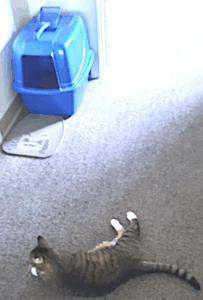 Dishwashing soap is an excellent option because:
Dishwashing soap is an excellent option because:
- It’s designed to cut through grease and organic matter
- It rinses away completely, leaving no harmful residues
- It’s gentle enough for food surfaces, making it safe for cats
Recipe: Mix 1 tablespoon of unscented dishwashing liquid with 1 gallon of warm water.
Mild Bleach Solution
For occasional deeper disinfection:
- Use only regular, unscented bleach (not splashless or scented varieties)
- Always rinse thoroughly and allow to dry completely before adding fresh litter
Recipe: Mix 1/4 cup of bleach with 1 gallon of water (1:32 ratio)
Vinegar and Water Solution
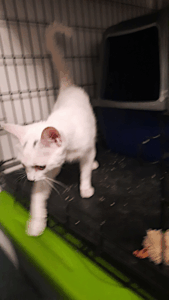 The solution we’ve used many times:
The solution we’ve used many times:
- Mix equal parts white vinegar and water
- Effective for odor neutralization and mild disinfection
- Safe for cats and environmentally friendly
Important: After using any cleaning solution, rinse the box thoroughly with clean water and allow it to dry completely before adding fresh litter.
Why Regular Cleaners Should Be Avoided:
When it comes to cleaning your cat’s litterbox, less is more. Many commercial cleaners contain strong chemicals, artificial scents, or ammonia—stuff that can irritate your cat’s nose, lungs, or paws. Even worse, leftover residue can be harmful if your cat licks it off while grooming. Instead, go for a pet-safe approach: use hot water with a bit of unscented dish soap or a simple vinegar-water mix. It gets the job done without putting your feline friend at risk.
Is Salt and Vinegar Effective?
A salt and vinegar combination can be effective for:
- Deodorizing (vinegar neutralizes odors)
- Light scrubbing (salt acts as a mild abrasive)
- Natural disinfection (vinegar has antimicrobial properties)
However, salt can sometimes leave residue if not rinsed thoroughly. If using this method, ensure you rinse completely with clean water.
Setting Up the Litter Box for Senior Cats
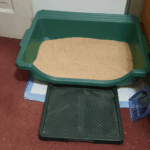 As our beloved cats age, their needs change—just like Belle and Paws did in their golden years. When setting up a litter box for senior cats, it’s important to keep mobility and comfort in mind. Look for boxes with low entry points or cut-out sides that are easy to step into, especially if arthritis is in the picture.
As our beloved cats age, their needs change—just like Belle and Paws did in their golden years. When setting up a litter box for senior cats, it’s important to keep mobility and comfort in mind. Look for boxes with low entry points or cut-out sides that are easy to step into, especially if arthritis is in the picture.
Walk-in designs were a game-changer for Belle and Paws once they hit their late teens. Bigger boxes help them turn around without a fuss, and non-slip mats at the entrance can prevent slips. If your cat’s vision isn’t what it used to be, make sure the area is well-lit. And most importantly—place the box on the same floor as their favorite nap spots so they don’t have to tackle the stairs.
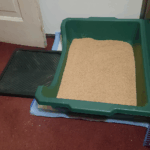 Where you place the litterbox can make a big difference—especially for older cats like Belle and Paws. Choose a spot that’s easy for your cats to get to, without having to jump or navigate stairs. Aim for a balance between privacy and visibility—cats appreciate a little seclusion but don’t want to feel abandoned in a back closet.
Where you place the litterbox can make a big difference—especially for older cats like Belle and Paws. Choose a spot that’s easy for your cats to get to, without having to jump or navigate stairs. Aim for a balance between privacy and visibility—cats appreciate a little seclusion but don’t want to feel abandoned in a back closet.
We converted this “Planter Box” to a litterbox. Originally its supposed to be used for transferring plants to nigger pots. However, a little ingenuity converted it over to what we needed.
Always keep litterboxes far away from food and water bowls (no one wants to eat next to the bathroom). If you’ve got a larger home, set up multiple boxes in different areas so your senior kitty always has one nearby. And don’t forget: avoid loud appliances like washing machines or dryers—surprise noises can be stressful, especially for aging years.
Litterbox Wisdom for Multi-Cat Homes
Living with multiple cats means more cuddles—but also more litterbox logistics. As we learned with our four furballs (shoutout to Bam Bam), you’ve got to plan ahead to keep the peace. The golden rule? The “N+1 Rule”: one litterbox per cat, plus one extra. We made it work with three boxes for four cats because we paid close attention to their habits and preferences.
Keep an eye out for signs that your cleaning schedule isn’t cutting it. If your cats are queueing up, hopping in the second you scoop, or going just outside the box, that’s their not-so-subtle way of saying, “Hey, Bruh, it’s time for a fresh box.” Hesitation before entering or overly dramatic covering behavior can be red flags too. Cats speak volumes with their behavior—you just have to be paying attention.
One trick that worked well for us? Offering a variety of litterbox setups. Some of our cats liked privacy. Others wanted a wide-open box. Some liked raised boxes, while senior cats like Belle and Paws preferred walk-in styles that didn’t require jumping. Giving them options not only prevented territory disputes, but also let each cat find the setup that felt right. Turns out, even with litterboxes, cats like a bit of personalization.
Choosing the Right Litter: Comfort and Cleanliness for Senior Cats
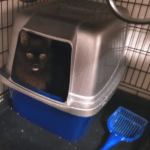 Not all litter is created equal—especially when you’re caring for older cats like Belle and Paws. Quality litter makes a world of difference, both for their health and your sanity. For starters, look for low-dust options. Seniors are more prone to respiratory issues, and dusty litter can aggravate those problems. Clumping ability is another biggie—it makes cleaning faster and less disruptive. Low tracking helps keep litter from ending up in places it doesn’t belong, and unscented formulas are a must. Artificial fragrances can be overwhelming for cats, especially seniors with heightened sensitivity. Finally, a soft texture goes a long way for delicate paws.
Not all litter is created equal—especially when you’re caring for older cats like Belle and Paws. Quality litter makes a world of difference, both for their health and your sanity. For starters, look for low-dust options. Seniors are more prone to respiratory issues, and dusty litter can aggravate those problems. Clumping ability is another biggie—it makes cleaning faster and less disruptive. Low tracking helps keep litter from ending up in places it doesn’t belong, and unscented formulas are a must. Artificial fragrances can be overwhelming for cats, especially seniors with heightened sensitivity. Finally, a soft texture goes a long way for delicate paws.
So what kind of litter should you go with? That depends on your cat—and you.
Clay-based litters offer strong odor control and clumping power, but they’re heavy, dusty, and a bit rough on aging feet.
Plant-based litters are gaining traction:
- Wheat and corn-based options are lightweight, natural, and biodegradable, with solid clumping.
- Paper litter is dust-free and super gentle on arthritic paws.
- Wood litters are another solid choice—lightweight, natural-smelling, and easy on the environment.
Crystal or silica litters are lightweight, long-lasting, and amazing at odor control, but they tend to be pricier—and some cats just aren’t fans of the texture.
The takeaway? Watch your cat. If they’re avoiding the box, kicking litter out like a sandbox bouncer, or licking their paws a little too much, it might be time to experiment with something gentler.
As Belle and Paws aged, we found that soft, dust-free litters became increasingly important. Fine-grain corn litters were gentler on their aging paws.
A Quick Word on Automated Litter Boxes
We get it—automated litter boxes sound like a dream. And to be fair, they’ve come a long way since the noisy, glitchy models of the past. But for us (and for senior cats like Belle and Paws), traditional litter boxes still win out.
There are real concerns with self-cleaning systems, especially those with doors or enclosed mechanisms. Some tragic incidents have occurred when sensors failed and cleaning cycles started with a cat still inside. Even when they work properly, the noise can be startling—something to keep in mind if your kitty’s a little jumpy or hard of hearing. And deep-cleaning these high-tech boxes? Not exactly a walk in the park.
If you do go the automated route, stick with open-top models that have a generous delay after cat detection. But overall, a simple box with consistent scooping has proven to be the safest and most comfortable solution for our seniors.
Conclusion
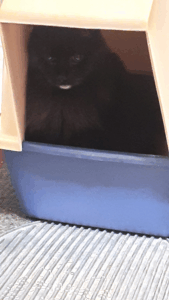 Maintaining a clean litter box environment is one of the most important things we can do for our feline companions, especially seniors. As Belle and Paws demonstrated through their long lives, cats’ needs evolve with age, requiring us to adapt our care routines. Whether it’s adjusting cleaning schedules, choosing the right litter, or selecting boxes with easy access, these considerations can significantly impact your senior cat’s comfort and health.
Maintaining a clean litter box environment is one of the most important things we can do for our feline companions, especially seniors. As Belle and Paws demonstrated through their long lives, cats’ needs evolve with age, requiring us to adapt our care routines. Whether it’s adjusting cleaning schedules, choosing the right litter, or selecting boxes with easy access, these considerations can significantly impact your senior cat’s comfort and health.
Remember that consistency is key—establishing and maintaining a regular cleaning schedule will help keep your cats healthy and your home odor-free. By following the guidelines in this article, you’ll create the optimal litter box environment for your senior cats, just as we did for Belle and Paws throughout their remarkable 20+ years.


